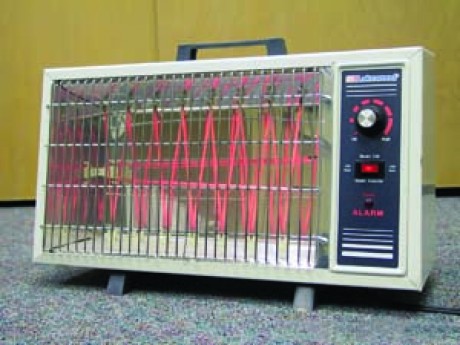Advice on space heaters

Space heaters are small, versatile, and generally good at warming a room. Claims that an electric space heater can significantly cut a home's heating bill are suspicious. The Cooperative Research Network advises that space heaters work best as a supplement to a furnace or heat pump, not as a primary heating source.
Radiant heaters heat objects and people — not the air — in a room. They can be a good choice if you are in a room for a short period of time and want instant heat. They can pose a burn or fire risk and should not be placed near furniture, drapery, pets or small children.
Convection heaters heat the air — not people or objects — in a room. These are typically either baseboard heaters or oil- or water-filled heaters. The oil- or water-filled heaters are the most efficient and typically look like a small radiator.
Combination heaters often have an internal fan that aids in distributing heat throughout the room. These heaters are versatile and more common as a result, although they do not typically perform as well as a radiant or convection heater.
Most space heaters use between 600 and 1,500 watts of electricity. If a homeowner were to use a space heater 8 hours a day, 5 days a week for a month it would cost approximately $15.26. But they can only heat a small space. They cannot replace energy-efficient central heating or weatherization improvements to the home. For example, all electric space heaters produce 1 unit of heat for every 1 unit of electricity consumed, meaning they are 100 percent energy efficient. Those that use natural gas are 80 percent efficient. In comparison, geothermal heat pumps can produce more than 3 units of heat for every unit of electricity consumed, making them 300 percent efficient.
The Cooperative Research Network is an arm of the National Rural Electric Cooperative Association.
-
Share this story:


